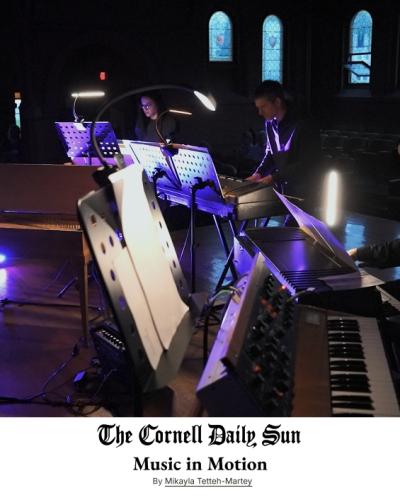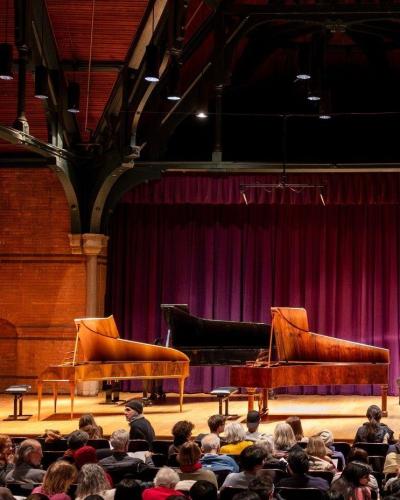Patricia García Gil, artist-in-residence at the Cornell Center for Historical Keyboards, will present “Voices of Influence: Exploring Power Dynamics in the Conservation of Musical Heritage in Colonial Latin America” at the Johnson Museum of Art’s upcoming symposium, Reimagining the Américas. Her presentation will focus on María Antonia Palacios, a Black enslaved woman in Chile, who played a key role in preserving secular music during the colonial period. García Gil’s research sheds light on Palacios’ hand-copied music collection, offering a rare glimpse into secular compositions, including works for the fortepiano, an instrument that helped shape cultural gatherings known as tertulias.
This free symposium, organized alongside the exhibition Colonial Crossings, will feature leading scholars exploring race, identity, and cross-cultural exchanges in colonial Latin American art and culture.
Attendance information:
The symposium will take place at the Johnson Museum of Art, in Robinson Lecture Hall, on Saturday, November 9th, 8:30AM-3:00PM. Patricia's presentation will be in the 3rd panel session, starting at 1:30PM. Email eas8@cornell.edu to register in advance for in-person attendance or join the webinar (Passcode: 673987).
Performance-presentation abstract:
“Voices of Influence: Exploring Power Dynamics in the Conservation of Musical Heritage in Colonial Latin America”
Patricia García Gil’s research sheds light on the often overlooked role of women like María Antonia Palacios, a Black enslaved woman in Chile, in preserving Spanish and Latin American music during the colonial period. While religious music dominated in colonial Latin America—much like religious paintings and other art forms used to reinforce colonial power—Palacios's hand-copied music collection offers a rare glimpse into secular compositions, including pieces for the fortepiano. Towards the end of the eighteenth century, this relatively new instrument made its way to the colonies alongside printed music, increasing access to education and the rise of a new socio-cultural class, sometimes mixed-race, who hosted cultural events known as “tertulias.” However, as we consider the overall obscurity of secular music, questions about the roles of race, gender, and class arise: it wasn’t until well into the 19th century that indigenous identities were given a voice. García Gil presents a musical program that could very well have been heard at a colonial tertulia. It encompasses music that was fashionable in colonial society, though conservative by European standards, reflecting the values of the Spanish and Italian traditions imported from the colonizing nation.
Symposium information:
“Reimagining the Américas: New Perspectives on Spanish Colonial Art”
Saturday, Nov 9, 2024
8:30AM-3:00PM / Registration Required
At this free symposium, presented in conjunction with the exhibition Colonial Crossings: Art, Identity, and Belief in the Spanish Americas, established scholars whose work encompasses a variety of regions and approaches to colonial Latin American art history will offer new methodologies, seeking to expand the boundaries of this visual culture. Presentations will explore the exhibition’s thematic emphases on materiality and sacredness, hybridity and cross-cultural exchange, colonial constructions of race, and recovering art histories marked by silence and erasure.




